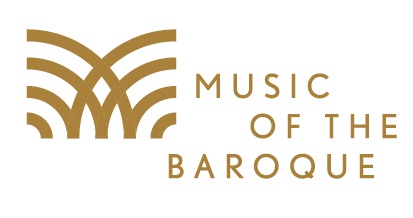
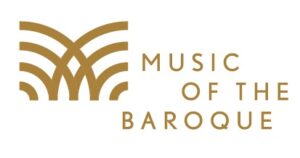 ***** “Heaven and Earth” consisted of four remarkable pieces of music, expertly performed by the Music of the Baroque orchestra and chorus. Conducted by Patrick Dupre Quigley (with the backing of chorus director Andrew Megill), the vocal and instrumental performers did a remarkable job! The concert that I attended took place at Saints Faith, Hope, and Charity Roman Catholic Church, in Winnetka, this past Sunday evening. While the church can boast of an absolutely gorgeous sanctuary, the acoustics (to my mind) are better suited to vocal than instrumental music. I simply had to get used to hearing a very different type of sound with more sustained tones than what I might have normally heard at a concert hall like the North Shore Center for the Performing Arts or the Harris Theatre.
***** “Heaven and Earth” consisted of four remarkable pieces of music, expertly performed by the Music of the Baroque orchestra and chorus. Conducted by Patrick Dupre Quigley (with the backing of chorus director Andrew Megill), the vocal and instrumental performers did a remarkable job! The concert that I attended took place at Saints Faith, Hope, and Charity Roman Catholic Church, in Winnetka, this past Sunday evening. While the church can boast of an absolutely gorgeous sanctuary, the acoustics (to my mind) are better suited to vocal than instrumental music. I simply had to get used to hearing a very different type of sound with more sustained tones than what I might have normally heard at a concert hall like the North Shore Center for the Performing Arts or the Harris Theatre.
The program began with Johann Sebastian Bach’s Orchestral Suite No. 1 in C Major, BMV 1066, which contains a variety of lively dance music and as Quigley later put it, “This is one of the greatest complete works of Baroque.” Yet due to the effects of echoing and reverberation inherent to the church architecture, this piece of music lacked its accustomed crispness. That said, I especially adored listening to the trio of bassoon (Lewis Kirk) and oboes (Anne Bach and Erica Anderson) during the Bourrée section and elsewhere. While there were a few moments at the beginning when beat was a bit fuzzy, the conductor and the orchestra were just warming up!
It was fascinating how Quigley chose to introduce the evening’s program only after the complete performance of the Bach—and then he commented on the music almost in reverse order. He started with the last piece first, namely, “Dixit Dominus”, HWV 232 by George Frideric Handel, which was written while the composer visited Rome at age 22. It uses the Latin text of Psalm 110. The performance by vocal soloists Katelyn Lee and Hannah Dixon McConnell (sopranos), Chelsea Lyons (alto), Ryan Townsend Strand (tenor), and Dominic German (bass) was dramatic, although the Latin words were not so easy to make out due to the room’s acoustics. Yet the combination of cello (Anna Steinhoff), bass (Collins Trier), and harpsichord (Stephen Alltop) during the first aria section could not be excelled, and the bass accompanying the soloists and chorus was extraordinary. All of the melodic phrases that were sung in the high registers were extremely clear and beautiful. The soprano duet featuring Lee and McConnell was particularly lovely. Kudos to the violin and viola accompaniment throughout!
The highlight of the evening was the performance of an a cappella piece written 150 years earlier called “Miserere mei, Deus” by Gregorio Allegri. To quote Quigley, “Miserere” is “a Renaissance composition with Baroque affect written in the 17th century” which he described as “haunting and amazing.” The high C’s in this work were incredible, and today’s staging was superb: If I could give six stars to any part of a performance, this would be it! The room started out in darkness with candle bearers walking down the three church aisles, reminiscent of a procession at the onset of Mass. A bell ringer standing right before the altar provided a slow but steady beat by using a distinctive-sounding bell/chime, in part to focus our attention on the significance of the liturgy. While the choir and most of the soloists stood at the front of the church, the tenor (Strand) played the part of the supplicant and remained at the back of the church to sing mournful solos in Latin. And he did so with outstanding skill, as did all of the soloists (Lee, McConnell, Lyons, and German) plus the chorus. Note that the room was so dark throughout this segment that you could not read the libretto. But this was perfectly okay, because the audience could take in the total experience! The Latin text was taken from Psalm 51, and my guest referred to this composition as “the Yom Kippur movement” because of its emphasis on cleansing oneself from sin.
In sharp contrast to the solemnness of the Allegri, Henry Purcell’s Act III “The Frost Scene” from “King Arthur”, Z.628 was light, fluffy, and funny. Playful staging made the audience feel as if we were at the opera. The scene featured a Roman god in the form of Cupid, played by the soprano McConnell, who waved a magic fairy wand, sang operatic solos, and danced gleefully while magically transforming people and the planet. The story confounds the love that Cupid would spread by warming people’s hearts with the weather getting warmer during springtime. The Cold Genius, played by German, mimicked chattering while singing as did the chorus, and this bit of feigning chills was beautifully done by all! But once their collective hearts were warmed by Cupid’s love, the Cold Genius and the members of the chorus shed their heavy winter apparel to don floral and Hawaiian shirts and shorts, in keeping with the change in season. What a nice touch to show that spring is in the air!
In my opinion, the concert would have been better titled “Earth and Heaven” because the first half of the program had to do with the mundane (with its emphasis on dance and the beauty of nature), whereas the second half had to do with the sacred contemplation of heaven and God. That said, in keeping with the “Heaven and Earth” theme, I would have flipped things around: which would have meant starting out with the Allegri, followed by the Haydn, and, after intermission, the Purcell and the Bach. But obviously this was not how others envisioned things. I know that Music of the Baroque frequently likes to end its concerts by reaching a pinnacle where the Divine is in the details and God’s dominion is over all.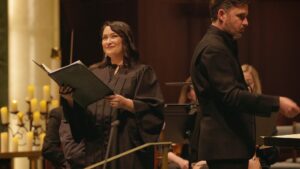
Perhaps more importantly, I’m not sure I would have necessarily selected these four pieces of music to form one cohesive program. Although the wide variation in musical styles allows the vocal soloists, the chorus, and the orchestra to demonstrate their huge array of talent, the progression from one composition to the next seemed too much like shifting gears radically. This doesn’t mean that the music wasn’t enjoyable, because it most definitely was. So while I enjoyed the performance immensely, my point is that I would have preferred more thematic consistency.
“Heaven and Earth”, Music of the Baroque, was performed at 7:30 p.m. on Sunday, May 12, 2024, at Saints Faith, Hope, & Charity Church, 191 Linden Street, Winnetka, Illinois.
This was followed by a performance on Monday, May 13th at 7:30 p.m. at the Fourth Presbyterian Church, 126 E. Chestnut Street, Chicago.
For more information about “Heaven and Earth”, visit: https://www.baroque.org/Seasons/2023-2024/heaven-earth.
On demand performances (via the internet) are available for unlimited watching/listening beginning on Friday, May 17th at 5:00 p.m. To purchase an OnDemand Pass, visit https://baroque.my.salesforce-sites.com/ticket/?_gl=1*1n8rmrw*_ga*MTk3NTIwNTU3OC4xNzEyOTgyODE3*_ga_HB6NHXP6H0*MTcxNTcyNDY3OS4yLjEuMTcxNTcyNDY4NC41NS4wLjA.#/instances/a0F8V00000JRk9oUAD.
For more information about this option, go to: https://www.baroque.org/Venues/on-demand.
For information on future performances of Music of the Baroque, including times, dates, and locations, please go to: https://www.baroque.org/.
Music of the Baroque is a resident company of the North Shore Center for the Performing Arts. To learn more about the venue, their future offerings, and ticket prices, visit: https://northshorecenter.org/.
To learn more about the Harris Theater, their future offerings, and ticket prices, go to: https://www.harristheaterchicago.org/.


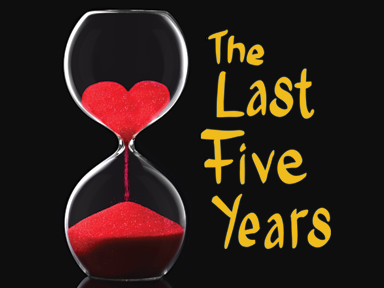

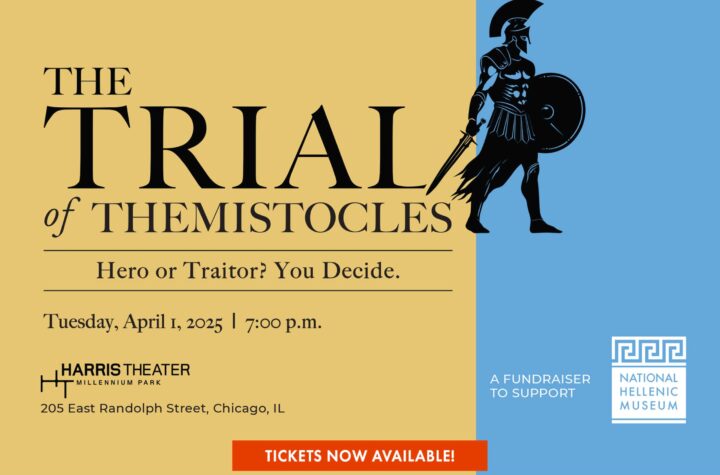
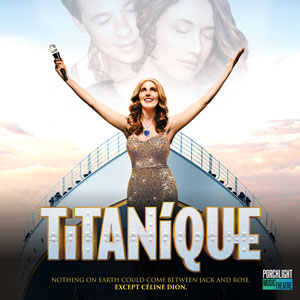
More Stories
Our Milwaukee “Staycation” 2025!
Passover
“Chocolate”